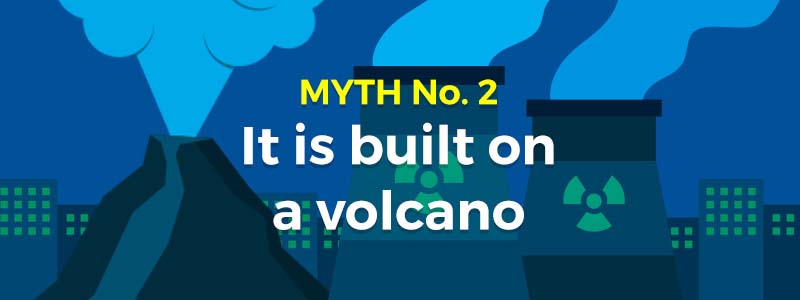SOCHI, Russia — Sitting atop a 389-hectare government property along the coast of Morong, Bataan, the hulking Bataan Nuclear Power Plant has stood quietly since its construction in the 1980s.
For almost 40 years, the fate of what critics called the "monster" of Morong has been hotly debated.
"We are the first in Southeast Asia to develop power plant but never used it," said Philippine Nuclear Research Institute Director Carlo Arcilla during a round table discussion at the 10th Atomexpo International Forum held in Sochi, Russia.
Atomexpo is a key exhibition event in Russian nuclear industry, organized by Russia's state atomic energy corporation Rosatom.
Arcilla, a geoscientist and geotechnical engineering expert, said it is important to set the facts straight about the first nuclear power plant in the Philippines.
"We (Filipinos) have suffered so many fake news in nuclear... It's overriding the public perception," he said.
Here are five prevailing myths about the dormant Bataan Nuclear Power Plant that experts debunked.

The Philippine Institute of Volcanology and Seismology has certified that there is no fault underneath the mothballed nuclear power plant.
Philvolcs added that the BNPP was built on a solid foundation of hard rock.
"While there are publications suggesting faults proximate to the plant, these do not underlie the plant, which would have made the plant inoperable," the PNRI chief said.
The proximity of the suspected faults, according to Arcilla, will require proof of the following:
- That the faults are active
- The maximum earthquake that can come from such active fault cannot be withstood by the 0.4g seismic design of the BNPP. The 0.4g design means that the whole nuclear structure can withstand ground acceleration at 4 meters/second/second, or 40 percent the acceleration due to gravity.

BNPP was built on the eruptive products on the flanks of Mount Natib but not on the crater of the volcano, Arcilla noted.
Since Mount Natib is a dormant volcano, Philvolcs dismissed possible hazards pertinent to BNPP's location such as volcanic eruption.
"For perspective, practically the whole of Metro Manila is built partially on pyroclastic flows (adobe) from Laguna de Bay caldera, which is much younger than Natib," Arcilla said.
"Laguna de Bay is not an active volcano, and Metro Manila is not built on a volcano," he added.
Since the length of the Manila trench is shorter than Japan's, experts say that the magnitude 9.0 earthquake that occurred close to the Fukushima plant "will probably not happen" in the Philippines.
An 8.0-magnitude earthquake in Mindanao in 1876 is the strongest that hit the country.
Arcilla emphasized that the earthquake did not destroy the Fukushima plant, Japan's oldest nuclear power plant.
Part of the disaster was the complete breakdown of the Fukushima plant after it was swamped by a tsunami produced by the earthquake.
The tsunami disabled the power supply and cooling systems of three Fukushima reactors, resulting to the release of radioactive materials to its surroundings.
The PNRI chief said that the accident could have been prevented had the operator followed an earlier advice to move its diesel engines for cooling at higher grounds.
"In contrast, BNPP elevation is 18 meters above sea level, which is higher than the 14-meter tsunami that happened in Japan. In addition, all the 420 plus nuclear power plants in the world have made redundant systems so that the loss of cooling will not be repeated. These lessons will be implemented if the BNPP is rehabilitated," he added.

Philippines' first nuclear power plant has at least three working sister plants which are very profitable and has been safely operating for 40 years.
These include Angra in Brazil, Krsko in Slovenia and Kori2 in Korea.
The said nuclear power plants "have more than recovered their investments and have upgraded to the latest operational standards," Arcilla noted.
Though the BNPP was never used, its nuclear core is still sound based on the recent evaluations made by the Korea Electric Power Corp. and Rosatom.
"The main challenge in rehabilitating BNPP is financial because of the replacements of ancillary parts like the steam generator and turbines, among others," the PNRI chief said.

Arcilla explained that the BNPP was built to withstand a seismic load of 0.4 g. Japan's Fukushima plant had a peak horizontal ground acceleration of 0.12g only.
This is more than twice that of the Fukushima plant and with upgrades to prevent repeat of the nuclear accident, he noted.
"Japan has similar geologic conditions in the Philippines and has at least 50 nuclear plants; Taiwan is also similarly tectonically active and has at least 4 NPPs, and Krsko is the only seismically designed NPP in western Europe," Arcilla said.
He assured that BNPP's containment structure was designed to resist the crashlanding of a large wide body aircraft.





